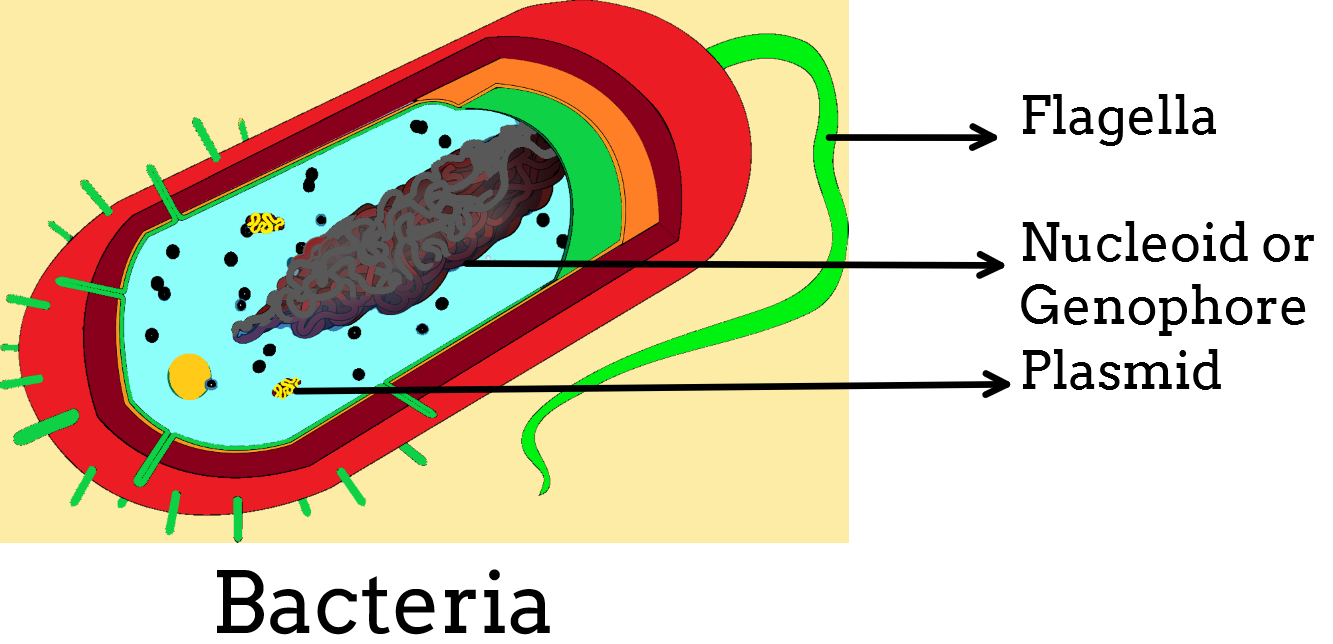
Size of a typical bacteria is
(a)2-10 µm
(b)10-15 µm
(c)100-200 µm
(d)15-50 µm
Answer
494.7k+ views
Hint: Bacteria are very small microorganisms which are visible under the microscope. They are having the size range in microns. An electron microscope is used for clear visualization of the internal structure of bacteria.
Complete answer:
Bacteria are very small microorganisms which are visible under the microscope. They are having the size range in microns. Most bacteria are approximately 0.5µm to 1µm. The surface area/volume ratio of bacteria is very high as compared to larger organisms of similar shape. The high surface area accounts for the high rate of growth and metabolism of bacteria. Bacteria are stained by staining reagents and then visualised under high power of magnification (1000X) of the compound microscope. An electron microscope is used for clear visualization of the internal structure of bacteria.

Additional Information: -Bacteria is unicellular, free-living, microscopic microorganisms capable of performing all the essential functions of life.
-They possess both deoxyribonucleic acid (DNA) and Ribonucleic acid (RNA).
-Bacteria are prokaryotic microorganisms that do not contain chlorophyll.
-They can survive extreme conditions of temperature, pH, oxygen, and atmospheric pressure.
- They are present in water, soil, air, food, and an all-natural environment.
- Flagella are the organs of locomotion long, slender, thin hair-like cytoplasmic appendages, which are responsible for the motility of bacteria. They are 0.01 to 0.02 µm in diameter, 3 to 20 µm in length. Flagella are made up of a protein- flagellin.
-Pili are hair-like microfibrils, 0.5 to 2 µm in length and 5 to 7 nm in diameter. They are thinner, shorter in size and more numerous than flagella. They are present only on gram-negative cells. They are composed of protein known as pillin. They are unrelated to motility and are found on motile and non-motile cells.
-The cytoplasmic (plasma) membrane is thin ( 5 to 10 nm). It separates the cell wall and cytoplasm. It is composed of phospholipids (20 to 30 %) and proteins ( 60 to 70 %). Prokaryotic plasma membranes are less rigid than eukaryotic membranes due to lack of sterols.
So, the correct answer is ‘2-10 µm.’
Note: -The cytoplasm of bacteria differs from that of higher eukaryotic microorganisms in not containing endoplasmic reticulum, Golgi apparatus, mitochondria and lysosomes. It contains the ribosomes, proteins and other water-soluble components and reserve material. In most bacteria, extrachromosomal DNA ( plasmid DNA ) is also present.
-Mesosomes are respiratory sites of bacteria. The mesosomes are attached to the bacterial chromosomes and are involved in DNA segregation during cell division. They are predominant in Gram-positive bacteria.
Complete answer:
Bacteria are very small microorganisms which are visible under the microscope. They are having the size range in microns. Most bacteria are approximately 0.5µm to 1µm. The surface area/volume ratio of bacteria is very high as compared to larger organisms of similar shape. The high surface area accounts for the high rate of growth and metabolism of bacteria. Bacteria are stained by staining reagents and then visualised under high power of magnification (1000X) of the compound microscope. An electron microscope is used for clear visualization of the internal structure of bacteria.

Additional Information: -Bacteria is unicellular, free-living, microscopic microorganisms capable of performing all the essential functions of life.
-They possess both deoxyribonucleic acid (DNA) and Ribonucleic acid (RNA).
-Bacteria are prokaryotic microorganisms that do not contain chlorophyll.
-They can survive extreme conditions of temperature, pH, oxygen, and atmospheric pressure.
- They are present in water, soil, air, food, and an all-natural environment.
- Flagella are the organs of locomotion long, slender, thin hair-like cytoplasmic appendages, which are responsible for the motility of bacteria. They are 0.01 to 0.02 µm in diameter, 3 to 20 µm in length. Flagella are made up of a protein- flagellin.
-Pili are hair-like microfibrils, 0.5 to 2 µm in length and 5 to 7 nm in diameter. They are thinner, shorter in size and more numerous than flagella. They are present only on gram-negative cells. They are composed of protein known as pillin. They are unrelated to motility and are found on motile and non-motile cells.
-The cytoplasmic (plasma) membrane is thin ( 5 to 10 nm). It separates the cell wall and cytoplasm. It is composed of phospholipids (20 to 30 %) and proteins ( 60 to 70 %). Prokaryotic plasma membranes are less rigid than eukaryotic membranes due to lack of sterols.
So, the correct answer is ‘2-10 µm.’
Note: -The cytoplasm of bacteria differs from that of higher eukaryotic microorganisms in not containing endoplasmic reticulum, Golgi apparatus, mitochondria and lysosomes. It contains the ribosomes, proteins and other water-soluble components and reserve material. In most bacteria, extrachromosomal DNA ( plasmid DNA ) is also present.
-Mesosomes are respiratory sites of bacteria. The mesosomes are attached to the bacterial chromosomes and are involved in DNA segregation during cell division. They are predominant in Gram-positive bacteria.
Recently Updated Pages
Master Class 9 General Knowledge: Engaging Questions & Answers for Success

Master Class 9 English: Engaging Questions & Answers for Success

Master Class 9 Science: Engaging Questions & Answers for Success

Master Class 9 Social Science: Engaging Questions & Answers for Success

Master Class 9 Maths: Engaging Questions & Answers for Success

Class 9 Question and Answer - Your Ultimate Solutions Guide

Trending doubts
State and prove Bernoullis theorem class 11 physics CBSE

Who built the Grand Trunk Road AChandragupta Maurya class 11 social science CBSE

1 ton equals to A 100 kg B 1000 kg C 10 kg D 10000 class 11 physics CBSE

State the laws of reflection of light

One Metric ton is equal to kg A 10000 B 1000 C 100 class 11 physics CBSE

Difference Between Prokaryotic Cells and Eukaryotic Cells




